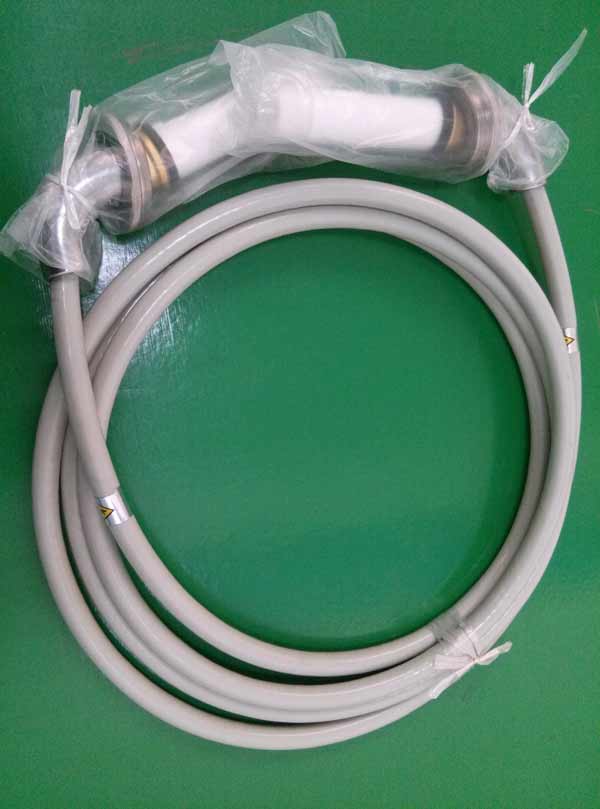Use and maintenance of X-ray high voltage cables
X-ray machine high-voltage cables are often twisted during use and are easily broken down and damaged, and repairs are also difficult to master. Now we will introduce some of the experience we have gained in the maintenance work for many years as follows for reference.
1 The reason why the high voltage cable is damaged
(1) Long-term damp or long-term exposure to ultraviolet radiation and other reasons cause the rubber to age, and the dielectric strength is reduced to cause breakdown.
(2) The quality of the high-voltage cable is poor, the thickness of the rubber layer and the core wire is uneven, the cutting is accidentally damaged during assembly, the rubber is scalded during welding, the surface is not cleaned thoroughly, causing discharge, and the core wire and plug are poorly welded.
(3) The dielectric strength of the poured filler is low, causing breakdown.
(4) Frequent twisting, hard folding or heavy pressure will damage the cracks in the insulation layer and cause breakdown.
(5) There is no surge resistance or damage to the surge resistance, and the high-voltage cable of the self-rectifying X-ray machine is easy to break down.
(6) The rectifier tube leaks air and breaks down due to leakage and short circuit.
(7) Corroded by gasoline and transformer oil, the rubber swells, the insulation degree is reduced, and the breakdown occurs. In view of the reasons for the above high-voltage cable damage, the following introduces some matters that should be paid attention to when overhauling high-voltage cables and methods to prevent further damage in the future.
2 Improve the maintenance process
(1) Do not cut excess (thick) insulating rubber with a sharp knife to avoid knife injuries. Use a wooden file to file the rubber layer of the high-voltage cable in turn, and do not use a file that has been filed through the metal material to repair the cable, so as to prevent fine metal particles from invading the insulating rubber layer, causing high-voltage static electricity, and breaking down the high-voltage cable rubber and cable plug.
(2) The fixing of the cable grounding grid on the high-voltage cable plug should be reliable to avoid static ignition caused by virtual welding. Before welding, the welding place should be cleaned and covered with a layer of tin. The welding speed should be fast to avoid scalding the insulating rubber Cause breakdown hazard
(3) For high-voltage cables that have been used for a long time, the root of the cable socket is bent due to aging and the quality of the cable. Therefore, the breakdown often occurs in those places that are bent by force. A steel sleeve is added to the upper end to reduce the breakdown damage caused by the bending of the cable root
(4) The insulating rubber layer and the inner wall of the cable plug should be clean without any dirt, and the possible moisture should be blown off with an electric hair dryer, and then welded.
(5) Avoid using fillers with high temperature to cause damage and deformation of insulating rubber or plastic.
(6) Improve the insulating filler in the high-voltage cable plug. After many years of trial, it is best to add 75% rosin with good transparency and 25% high-quality transformer oil. After heating and mixing, the filler effect is better.
(7) Avoid hard bending and heavy pressure of high-voltage cables. When hanging high-voltage cables, use circular groove-shaped hangers with radians, and do not hang directly on the hooks or hang them by bundling.
(8) To prevent the cables from getting damp and moldy, it is better to hang high-voltage cables, and it is not advisable to use cable trenches.
(9) The high-voltage cables that have been damp should be dried in a drying box or an oven with a constant temperature before use.
If you are interested in our high-voltage cables, you are welcome to contact us at (whatsapp): +8617616362243!






